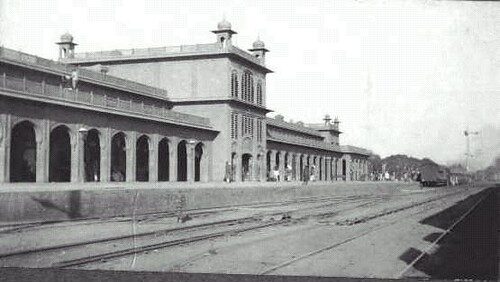- Advertisement -
M Atif Ismail
MULTAN, Feb 10 (APP):Out of total six historic Sarai (Inns) at Multan City Railway Station which was once a bustling hub for passengers, Khuda Bakhsh Sarai is still operational and offering residential facility to scores of its permanent weary travelers on daily basis from across the country.
In past, outside the station, the streets were alive with tea stalls, local eateries, tandoors, and the famous Sohan Halwa stalls. Six Sarai (inns) provided shelter to weary travelers.
However, one Sarai Khuda Bakhsh stood as a significant landmark, a place where travelers from across regions, especially Sindh, staye before heading to the historic shrines of Multan.
A 75-year-old Abdul Ghafoor, a resident who witnessed the golden era of these Sarai, recalled how his father used to call out to passengers, inviting them for a stay.
Talking to APP, he mentioned that there were two Hindu Sarai, while four belonged to Muslims, including Dilawar Shah, Khuda Baksh, Sharif Kashmiri, Malkoon Wali Sarai. These inns were once filled with travelers, traders, and devotees, contributing to the city’s vibrant cultural and economic life.
Popular Waseeb Explorer Amir Bashir informed, Sarai culture in sub-continent appeared during Sher Shah Suri era. However, with passage of time, it started working on commercial basis.
However about Khuda Bakhsh Sarai, he shared “upon visiting Khuda Bakhsh Sarai, the first sight that struck was its majestic entrance, which still stands strong. Just inside, an old Masjid, still in use, tells the tale of time. Moving further, an archway with name of Khuda Bakhsh, his birth and death years inscribed on it, marks the way to the main courtyard. Amir Bashir further added, “the massive wooden doors, once welcoming countless visitors, remain unchanged.
Behind them were offices where managers and workers of the Sarai once kept track of arrivals and departures. Beyond the offices lay a spacious courtyard, surrounded by veranda-lined rooms, where travelers used to stay, he added.
The architectural beauty of the Sarai, with its open and airy design, still reflects its grandeur, though time has left its mark.
About declining Sarai culture, he remarked that modern guest houses replaced the Sarai culture but guest houses were too much expensive and lower middle class families could not afford expenses at guest houses.
Muhammad Asghar, the manager of Khuda Bakhsh Sarai informed that about 250 people used to stay here till 1990. However, now it could accommodate only 20 persons. About charges, he stated that Rs 10,000 was charged for one month stay.
He further informed that popular singers Mehdi Hassan, Ghulam Ali, Raishma and many others also used to stay here. However, suspension of City Railway Station, the Sarai facing decline in terms of customers. He hinted that Sarai offer residential facilities to families also.
Muhammad Razaq, 65, another citizen, who once sold “Flooda and Sohan Halwa” at the railway station, remembered the bustling businesses outside the Sarai. He spoke of Ghani Mal-Pooriwala, a famous vendor, and Chacha Rahimo’s grocery shop, where the guests of the Sarai would buy essentials. Travelers from Sindh, especially devotees visiting shrines, were called “Pir Bhai” by the locals. These pilgrims brought life to the Sarai, making it an essential part of Multan’s history.
But time has not been kind to Khuda Bakhsh Sarai. Where once travelers rested. The descendants of Khuda Bakhsh still reside in the Sarai, but the vibrant days are long gone. As City Railways Station itself fell into disuse, so did everything around it. He however lamented the Sarai Culture turning into a forgotten relic of the past.

